Image scanner counts within 5% of numbers determined by hand counting
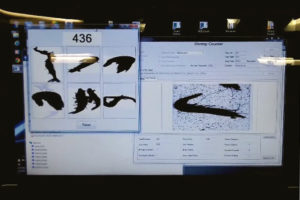
The ability to accurately quantify the survival of shrimp in culture systems has been a challenge for the shrimp-farming industry for many years. Accurate survival data is very important so that feed can be applied at the correct rate. Overfeeding results in decreased water and/or bottom soil quality and increased feed costs.
Traditionally, shrimp farmers using ponds for production have relied on cast netting shrimp and then relating the amount caught in the surface area of the cast net to the surface area of the entire pond. While this has provided an estimation of growth, it has never been a reliable method for estimating survival.
To accurately determine the number of shrimp in a tank culture system, it is necessary to drain the tank, collect the shrimp in a mesh bag and then weigh them out of water. Holding shrimp out of water causes stress due to the lack of dissolved oxygen and being highly concentrated when packed for weighing during a process that can take up to two minutes. This increase in stress and potential exoskeleton damage increases mortality and can lead to increased occurrences of black spot. Additionally, this method requires the amount of water adhering to the shrimp to be considered.
An alternative method for counting shrimp that incorporates optical scanning and associated software reduces stress and increases accuracy as compared to traditional techniques.
New shrimp production technology
The Texas AgriLife Research Mariculture Laboratory in Port Aransas, Texas, USA, has developed a new shrimp-farming technology consisting of shallow super-intensive stacked raceways designed to produce a crop of shrimp every four weeks. Postlarvae are stocked into a nursery tank above the top raceway and grown for four weeks. After this initial stage, shrimp are transferred into a full-size raceway and dropped down every four weeks until they reach the target size of greater than 30 g after 20 weeks.
One of the key aspects to the success of this technology is the ability to estimate the number of shrimp as they are transferred from an upper raceway to a lower raceway to achieve desired harvest biomass after each four-week period without causing undue stress. To keep these shrimp at the desired biomass, some must be removed during each transfer. The success of this system is contingent on accurate shrimp counts and knowing biomass at all times.
Shrimp counter
The Larcos (LARvae COunting System) postlarvae and shrimp counter developed by Larcos Aquaculture, LLC of St. Petersburg, Florida, USA, is a design that addresses the counting needs in the super-intensive stacked raceways with minimum stress. The counter utilizes a light source adjacent to a line-scan camera while shrimp pass through an imaging chamber for counting in real time (Fig. 1).
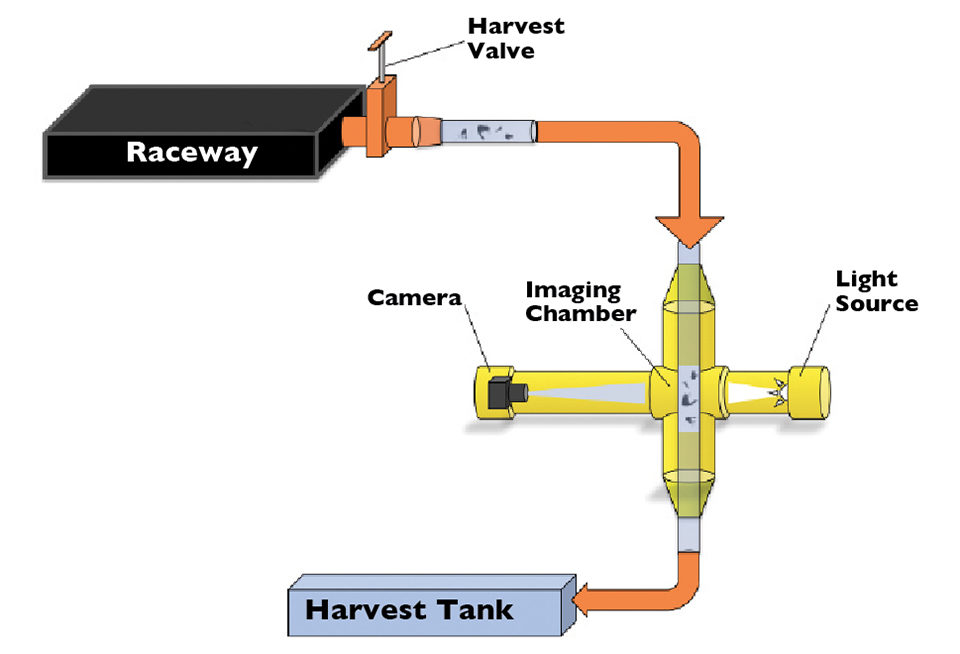
It weighs about 4 kg and consists of a four-way polyvinyl chloride (PVC) fitting. The counter is seated inside PVC pipe with a diameter of 2 in (5.1 cm) or greater for the needs of a particular application. The Larcos counter attaches to the harvest valve of the upper tank and counts shrimp in the water as it flows to a lower raceway.
The counting data scrolls across a laptop computer equipped with counting software as the shrimp are harvested. The software can count clusters of shrimp and individual shrimp, but discounts molts, feed and other debris that passes through the imaging chamber. Shrimp can be counted at rates above 1,000/minute, and the system has the potential for faster counting, as it was based on a system that counted zooplankton.
Counter testing
Counter testing began at the Texas AgriLife Research Laboratory in July 2011. Data was collected through a series of over 100 tests running shrimp varying in size from 1.5 to 18 grams through the counter. The preliminary data collected was used to create a training library, the collection of images the counting software uses to learn to distinguish among all objects that may be imaged. These recognition categories include the aforementioned shrimp, overlapping shrimp images, molted carapaces, air bubbles, feed and debris.
In addition to data collection for the training library, trial and error were used to find the optimum setup for raceway transfers. The counter was attached to the harvest valve at the end of a raceway, and then PVC pipe was angled at 45 degrees into a harvest tank. Shrimp in the raceway were crowded into the end so an even distribution of shrimp and water flowed through the tank. With a 3-in (7.6-cm) PVC fitting, water drained through at a rate above 100 gal (378 L)/minute. Over 500 shrimp passed through the counter per minute.
When the counting software was started, shrimp were drained through the counter and collected in a mesh bag in the harvest tank. The number of shrimp was recorded, and the mesh bag weight was recorded for later comparison with a hand count. Each raceway’s shrimp were passed through the counter three times and hand counted after the third trial.
Results
According to the authors’ data, the scanned counts were within 5.0 percent of the exact numbers of shrimp determined by hand counting. The average margin of error was 2.2 percent for all trials.
Furthermore, the automated counter increased harvest and transfer efficiency in the stacked raceway system as the shrimp were transferred from higher to lower stacks. It also eliminated stress incurred by weighing shrimp out of water.
The counter provided sorted digital images of all objects that passed through the harvest valve, allowing count verification and further analyses such as size distribution. The operator could scroll through the folders, viewing the thumbnail images to verify that the images were correctly identified. By counting the errors, an error rate can be calculated, and erroneously classified images could be added to the training library to increase future accuracy.
In addition to its application in the stacked raceway system, the counter is well suited for use in hatcheries to count postlarvae, transferring juvenile shrimp from nursery tanks into ponds, harvesting from culture systems for the live shrimp market, and other shrimp industry applications.
(Editor’s Note: This article was originally published in the September/October 2012 print edition of the Global Aquaculture Advocate.)
Authors
-
Brinson A. Lingenfelter
Texas AgriLife Research Shrimp Mariculture Laboratory
1300 Port Street
Port Aransas, Texas 78373 USA[109,111,99,46,108,105,97,109,103,64,114,101,116,108,101,102,110,101,103,110,105,108,46,110,111,115,110,105,114,98]
-
Addison L. Lawrence, Ph.D.
Texas AgriLife Research Shrimp Mariculture Laboratory
1300 Port Street
Port Aransas, Texas 78373 USA -
Eric Steimle, Ph.D.
Larcos, LLC
St. Petersburg, Florida, USA -
Will Flanery
Larcos, LLC
St. Petersburg, Florida, USA -
Kurt Kramer
Larcos, LLC
St. Petersburg, Florida, USA
Tagged With
Related Posts
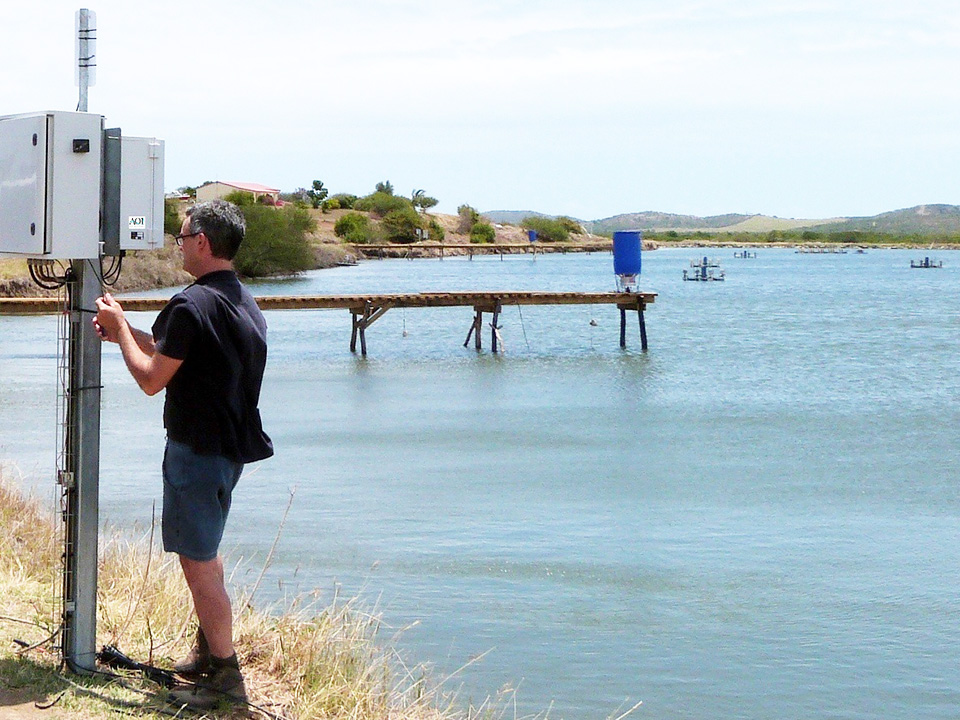
Innovation & Investment
Acoustic control improves feeding productivity at shrimp farms
In systems recently developed for shrimp farms, passive acoustic-based technology enables sensor-based control of multiple automatic feeders. Improved growth and feed conversion have been recorded at commercial farms using the technology.
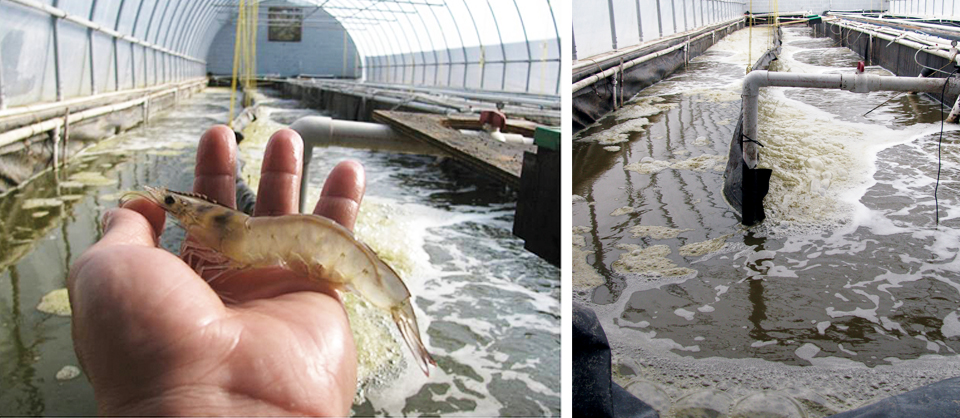
Health & Welfare
Biofloc trial results in fast shrimp growth, low FCR, high survival
A trial in a lined, greenhouse-enclosed raceway evaluated the use of a heterotrophic biofloc system equipped with aeration, supplemental oxygen injection and centralized heating to achieve good shrimp production.
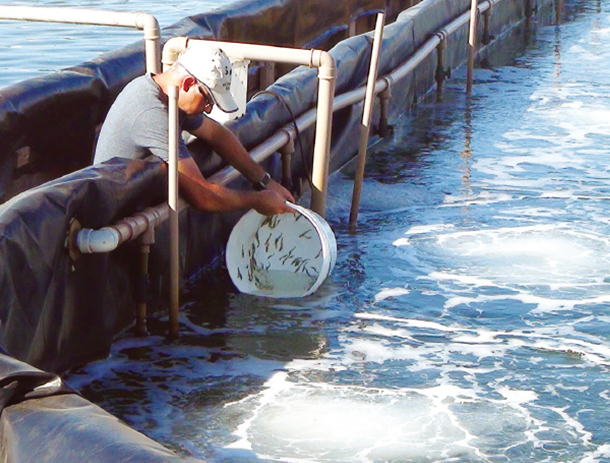
Innovation & Investment
Brazil study results encouraging for injector
Zero-exchange biofloc systems allow elevated stocking densities and production, but also require more dissolved oxygen and thorough water circulation. A new type of air injector uses only a centrifugal pump to recirculate water while naturally aspirating ambient air.
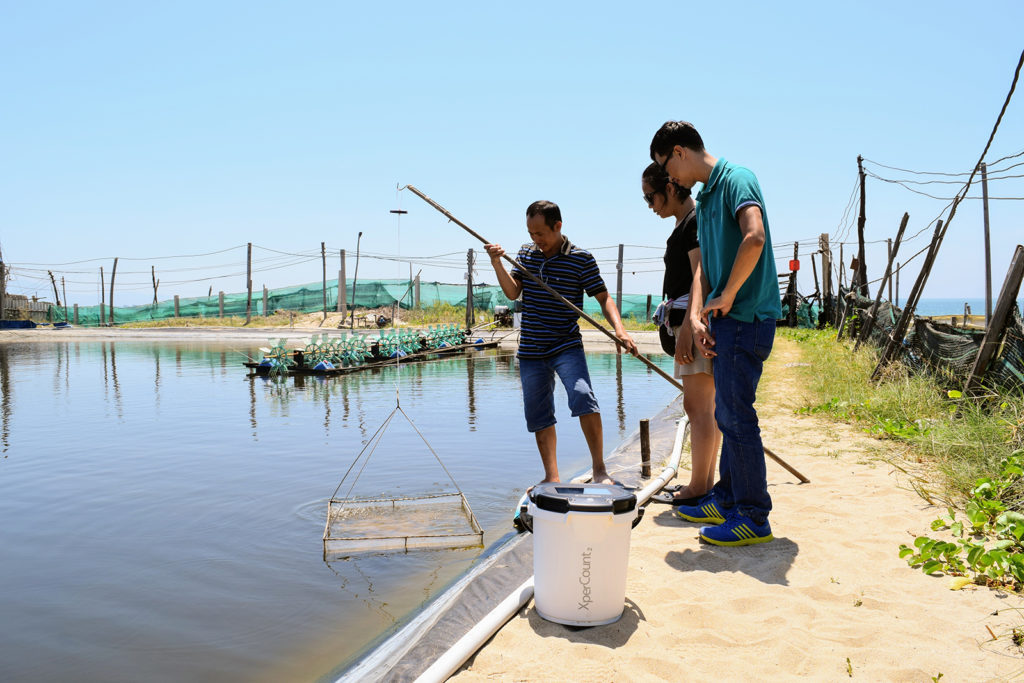
Innovation & Investment
One fish, two fish: Counting technology nets funding for Canadian engineering firm
XperCount, aka the “magic bucket,” uses optics and photonics to deliver 95 percent accurate count of microorganisms, such as fish or shrimp larvae, in just seconds.


